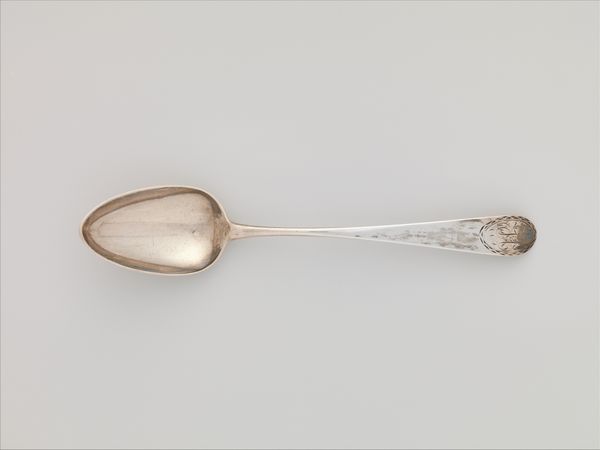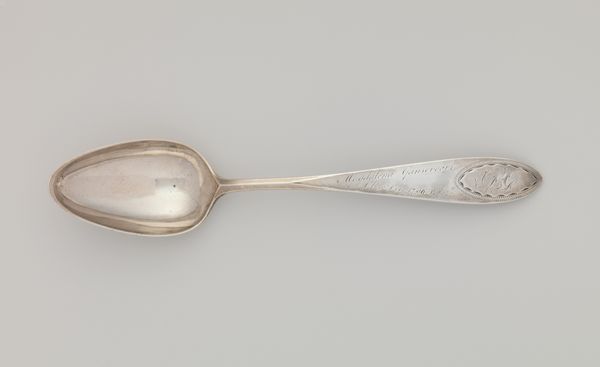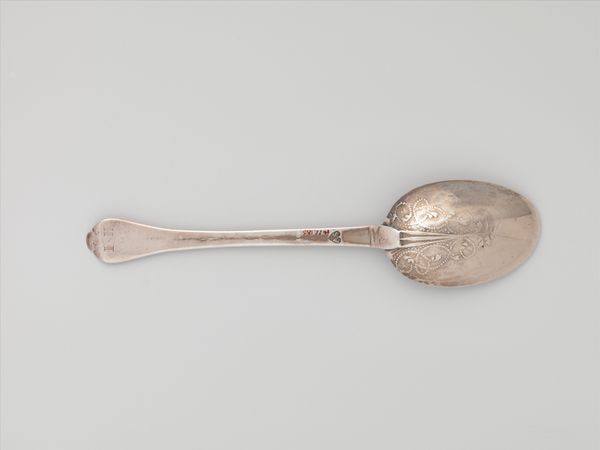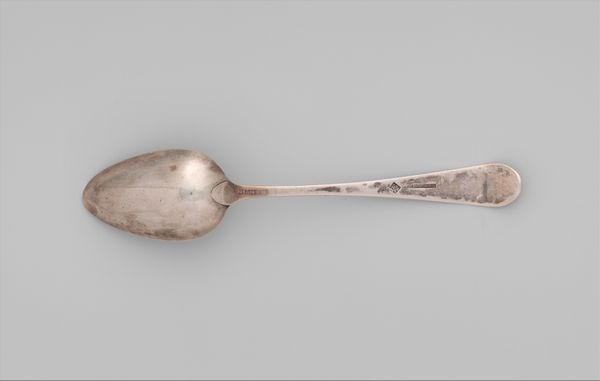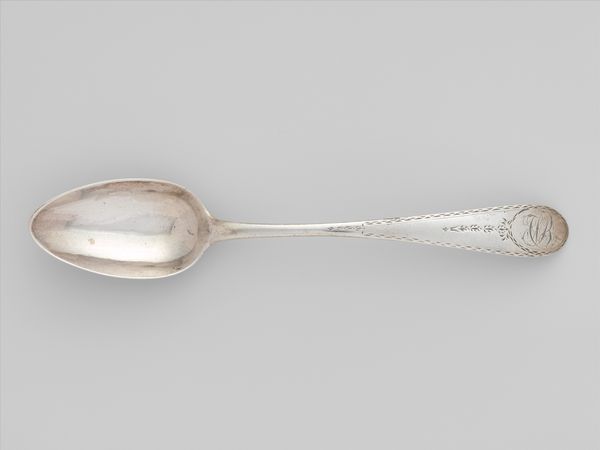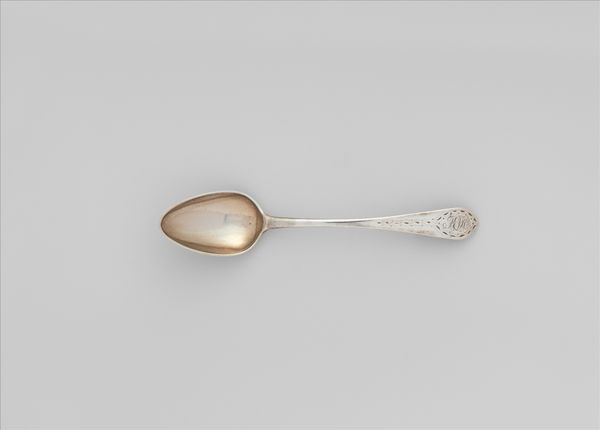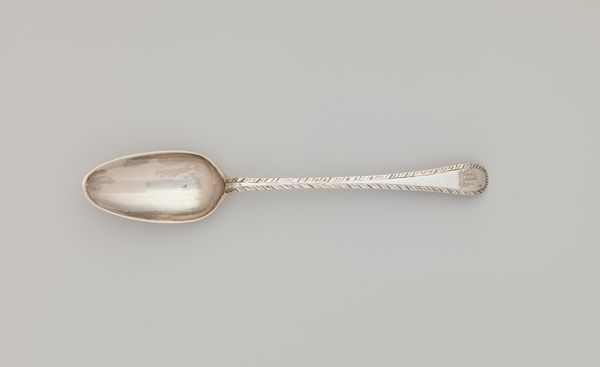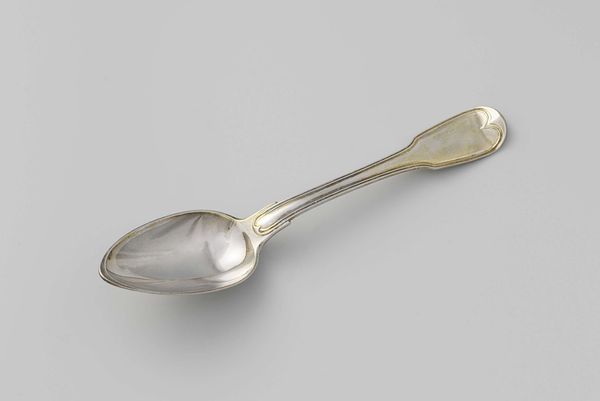
silver, metal
#
silver
#
baroque
#
metal
Dimensions: Overall: L. 11 13/16 in. (30 cm); 3 oz. 19 dwt. (122.4 g) Bowl: 2 x 3 1/2 in. (5.1 x 8.9 cm)
Copyright: Public Domain
Editor: So, this object is a silver serving spoon dating from between 1725 and 1750. Its simple elegance is quite striking. How should we interpret a relatively humble object like this? Curator: I'm interested in how something as simple as a spoon can speak to the power structures of its time. Think about who owned silver, who used it, who cleaned it. What stories about gender roles, class divisions, and labor practices can we glean from this object? Editor: It seems to imply domesticity and maybe some amount of wealth, given it's made of silver. But it also just seems like a regular spoon! Curator: Exactly. And “regular” for whom? Owning and using such a spoon signaled belonging to a particular social stratum. Think about how access to material goods, like silver, reinforced existing hierarchies. Furthermore, the labor involved in acquiring the raw materials and crafting this spoon often exploited marginalized communities. What looks simple hides a complex web of social relations. Does knowing that change your perspective? Editor: I guess so. It's strange to think of something so commonplace holding all of that significance. Curator: Precisely! By looking closely, even the simplest objects can unlock complex histories and reveal the intricate ways that power and inequality were woven into everyday life. Editor: It's fascinating to think about how a simple utensil could tell such a complicated story! Curator: Absolutely. It prompts us to critically examine the seemingly mundane objects that shape our world and to consider whose stories are often left untold.
Comments
No comments
Be the first to comment and join the conversation on the ultimate creative platform.


